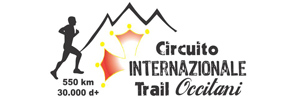From Foix to Vielha, cimbing up the garonne valley
162 KM 8 days
This last stretch is characterised by box hedges and holly bushes, magnificent beech groves and pastures which can be considered more than “alpine”. As a matter of fact the snowy crests on the horizon are the Pyrenees, reaching an altitude of 3,404 m with the Pic de Aneto; these mountains hit the headlines in relation to the Tour de France hill climbs, and, among them, the well-known Col de Portet d’Aspet is the destination. Like almost all mountain regions across the western world, even the Pyrenees have been affected by a significant decrease in population and abandonment of traditional activities. Nevertheless, mountain agriculture and sheep and cattle breeding in particular are still part of the landscape in the lower valleys, where endless fenced green fields can be seen. Thanks to the nearby Mediterranean Sea and Atlantic Ocean and the consequent abundance of rainfall, the Pyrenees have a flourishing vegetation. And when pastures or fields are not being crossed, woods are dominant on the horizon. Nowadays, as in the past, the exploitation of forests in the Pyrenean valleys has been one of the main sources of support for their inhabitants, together with farming. Trunks floated along the Garonne, the main river of the French and Atlantic side, also connected to the Mediterranean through the Canal du Midi. Many villages that rose along its banks or along its main affluent rivers, such as St-Girons and St-Béat, owe their fortune to the transit and trade of fir trunks and to the columnar beech trees of the Pyrenees.
The walk of the Occitània a pè ends at the head of the Val d’Aran – the high valley of the Garonne – in the Catalan region but on the eastern side of the Pyrenean watershed. The geographical location of the valley, whose waters flow towards France, explains the persistence of Occitan language in its Gascon and Aranese variants. The deep cleft of the Garonne valley has been from time immemorial one of the main transit towards Spain. Numerous vestiges of Romanesque art in Foix, Bossòst, in St-Béat and in minor places recall the passage of pilgrims on their way to honour the burial place of Saint James in the Dark Ages. Still today the names of the main roads of cities and villages (Sant Jaime, St-Jamme) recall the Pilgrimage way to Santiago de Compostela.
Stages:
56 – From Foix to La Bastide-de-Sérou
57 – From La Bastide-de-Sérou to St-Girons
58 – From St-Girons to Cazavet
60 – From Arbas to Juzet-d’Izaut



